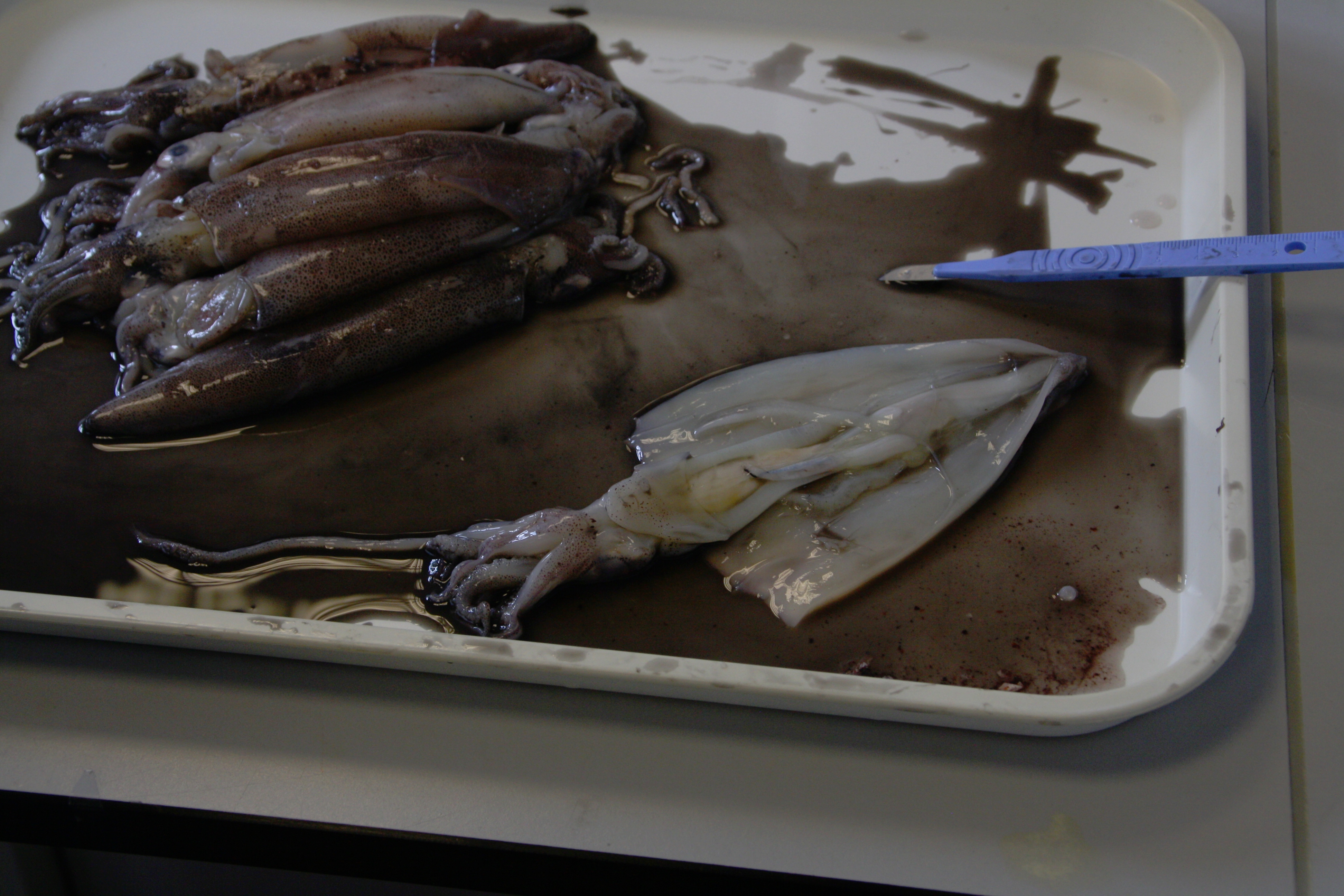Team:Cambridge/Experiments/Squid Dissection and Tissue Sample
From 2011.igem.org
(→Tissue samples for DNA extraction) |
|||
| Line 19: | Line 19: | ||
A[[Team:Cambridge/Protocols/Extraction_of_genomic_DNA_from_squid| DNA extraction protocol]] was followed to isolate genomic DNA from tissue. | A[[Team:Cambridge/Protocols/Extraction_of_genomic_DNA_from_squid| DNA extraction protocol]] was followed to isolate genomic DNA from tissue. | ||
| + | |||
| + | ==Design of Primers== | ||
| + | |||
| + | We decided to perform PCR in order to isolate and amplify reflectin coding sequences from genomic DNA of ''Loligo vulgaris'' and ''Loligo opalescens''. | ||
| + | As no reflectin gene sequences from the two species that we worked with are known, we designed primers relying on the published sequences of A1, A2 and B1 reflectin mRNAs from Loligo pealei. | ||
| + | |||
| + | |||
| + | |||
| + | |||
| + | As no reflectin gene sequences from L.vulgaris and L.opalescence are known, we decided to design primers relying on the published sequences of A1, A2, B1 reflectin genes from Loligo paelaii. | ||
| + | Our assumptions: | ||
| + | - Close evolutionary relationship and importance of reflectin proteins for the animal survival - we expect other squids from the Loligo genus to express the same set of reflectin proteins | ||
| + | - the amino acid sequence is generally more conserved than nucleotide sequences\: | ||
| + | ○ We considered designing degenerate primers | ||
| + | - However, we compared codon usage of different Loligo species and also compared sequences of Loligo paelei and Loligo forbesis species to estimate what variation in nucleotide usage is seen between different species from the same genus. | ||
| + | - As the sequences were fairly cnserved, we decided to use primers complementary to terminal sequences of published Loligo paelei reflectin sequences. | ||
| + | ○ Show sequences | ||
| + | ○ We planned to amplify entire coding sequence - from the start codon to the stop codon | ||
| + | ○ The published sequences are mRNA sequences - no information about promoters, 5'UTR and 3'UTR. Additionally, no information about the presence and position of introns. | ||
| + | § However, according to literature, the bobtail squid reflectin genes do not contain introns | ||
| + | § High deviation of PCR products from the expected length will give us clue about the presence of introns, although it will not be entirely conclusive, as some other factors may have an influence on the length of products: | ||
| + | □ Variation between species | ||
| + | □ Misannealing | ||
| + | |||
| + | After preparation of master mix | ||
Revision as of 09:44, 22 July 2011
Obtaining DNA coding for reflectin proteins was the vital first step in our project. [http://en.wikipedia.org/wiki/Loligo Loligo] tissue was sourced from fishing bait suppliers and culinary wholesalers in order to attempt genomic DNA extraction. From our literature search we discovered that the reflectin gene from E. scolopes contains no introns, so genomic DNA should be suitable for expression in E. coli.
Squid Dissection
Specimens of what we identified as [http://www.marlin.ac.uk/speciesinformation.php?speciesID=3718 Loligo vulgaris] and [http://en.wikipedia.org/wiki/Opalescent_Inshore_Squid Loligo opalescens] were dissected for examination. Samples of skin tissue and eye cups were taken from L. vulgaris for further imaging. No obvious iridescence was seen in the skin sample under a dissection microscope or by confocal microscopy. In accordance with [http://rsif.royalsocietypublishing.org/content/early/2011/02/14/rsif.2010.0702.full Holt et al], we found clearly visible iridescence in the tissue surrounding the eye lens.
Tissue samples for DNA extraction
To isolate squid genomic DNA as a template for PCR, samples of squid tissue were cut from representative specimens. Internal organs and tissue were dissected with the aim of minimizing external contamination. L. vulgaris specimens were obtained from two different sources, so samples were taken from both.
A DNA extraction protocol was followed to isolate genomic DNA from tissue.
Design of Primers
We decided to perform PCR in order to isolate and amplify reflectin coding sequences from genomic DNA of Loligo vulgaris and Loligo opalescens. As no reflectin gene sequences from the two species that we worked with are known, we designed primers relying on the published sequences of A1, A2 and B1 reflectin mRNAs from Loligo pealei.
As no reflectin gene sequences from L.vulgaris and L.opalescence are known, we decided to design primers relying on the published sequences of A1, A2, B1 reflectin genes from Loligo paelaii.
Our assumptions:
- Close evolutionary relationship and importance of reflectin proteins for the animal survival - we expect other squids from the Loligo genus to express the same set of reflectin proteins
- the amino acid sequence is generally more conserved than nucleotide sequences\:
○ We considered designing degenerate primers
- However, we compared codon usage of different Loligo species and also compared sequences of Loligo paelei and Loligo forbesis species to estimate what variation in nucleotide usage is seen between different species from the same genus.
- As the sequences were fairly cnserved, we decided to use primers complementary to terminal sequences of published Loligo paelei reflectin sequences.
○ Show sequences
○ We planned to amplify entire coding sequence - from the start codon to the stop codon
○ The published sequences are mRNA sequences - no information about promoters, 5'UTR and 3'UTR. Additionally, no information about the presence and position of introns.
§ However, according to literature, the bobtail squid reflectin genes do not contain introns
§ High deviation of PCR products from the expected length will give us clue about the presence of introns, although it will not be entirely conclusive, as some other factors may have an influence on the length of products:
□ Variation between species
□ Misannealing
After preparation of master mix
 "
"




